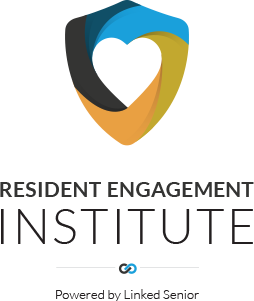Bingo is the American version of a game that originated as an Italian Lottery called “Lo Giuoco del Lotto D’Italia,” that dates back to the mid-1500s. When the game reached North America in 1929, it was known as “beano” and renamed Bingo after a caller yelled out “BINGO” instead of beano. Bingo is probably the number one game played in senior living communities today. It is also the number one fundraising game used by fire companies.
Bingo is not just a fun game but it also has many health benefits. It takes concentration to play which improves listening and short-term memory skills. The game promotes socialization that is essential for older adults to maintain a happy and healthy lifestyle. Being social can reduce stress, depression and anxiety while increasing a person’s physical health. Older adults who participate in regular social activities tend to live longer and healthier lives. Ultimately, the game is an affordable way to promote mental, emotional and physical health. A high quality Bingo set costs only $25 on Amazon.com, can be used all day long to engage up to 50 people or more and will last many years. This makes it a very good return on investment for senior living operators.
However, the fame and success of the game has come at a cost. It is now one of the 3 Bs: Bingo, Bible and Birthday, which are the standard of engagement offered in senior living communities. For the most part, activities and life enrichment departments are poorly funded, staff aren’t provided with the tools they need to optimize resident engagement and they aren’t recognized in the industry as a revenue generating component of the community. This means that activity and life enrichment professionals are forced to do the best with what they have, overall standards are low and often not person-centered and so the 3Bs have a bad reputation.
The problem with Bingo isn’t what it is but what it represents: mostly the inability of our industry to provide person-first engagement for every resident. The COVID-19 pandemic has shed light on this in a disastrous way as social isolation is accelerating physical and cognitive decline in residents. On top of this, communities are struggling to retain staff who are facing increased stress and burn out. Though this is alarming, it also offers our industry the opportunity to completely rewrite the operating manual for resident engagement.
The pursuit of purpose is a basic human right. We need to acknowledge the 3 Bs as just a starting point and then take the next step of truly knowing every older adult by asking them how they want to live and what brings them joy. But how does one begin to do that especially when budgets are tight and there are staffing shortages? We need to prioritize efficiency and use the proper tools to optimize resident engagement. Many operators are using technology to eliminate obstacles that arise when paper is used for documentation and care planning and empower activity and life enrichment professionals to:
- Get to Know the Resident
Understanding the unique life experiences of each resident empowers senior living communities and ensures every person can live in a meaningful and purposeful way each day.
- Create a Personalized Plan
The data collected when getting to know the resident, including their current preferences and needs, helps staff create a personalized care plan that offers each resident activities that match their unique personhood.
- Engage Residents Meaningfully
Technology can help staff members deliver both one-on-one and group engagement activities that can include games, brain fitness, music therapy, reminiscing and other therapeutic interventions all tailored to a person’s own preferences and current cognitive ability.
- Evaluate and Optimize Engagement
Engagement is only successful when it matches the current needs and preferences of an older adult and technology can help staff track those data points in real-time and make adjustments each day so that a care plan is the best fit for each unique resident. This leads to better team communication, enhanced family visits and increased resident satisfaction.
The global pandemic has offered the field of resident engagement an opportunity to start fresh when it comes to activities in senior living communities. Now is the time to acknowledge what the 3 Bs represent and remember that the key to meaningful engagement is making the time to get to know each resident.

